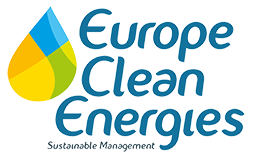A typical PV Project setting up in Japan is as follows:
1. Selection of a site for the PV project.
It is recommended that agricultural land, forest reserves, culturally sensitive land and national and quasi-national parks are avoided due to cumbersome permit processes. A certified copy of the land register in respect to any land of interest should be obtained in order to check whether there are any registered interests such as mortgages, leases or easements which may affect the proposed project. Usually no building permits or environmental reports are required. Prefectures and Municipalities should be contacted as local laws may diverge from the national position. The Town Planning Act should also be taken into account if land is intended to be altered. So, apart from the distance to the grid connection point and the timing and pricing for the interconnection, possible assessments, Forest Acts, Land Conversions requirements, drainages and budget of the civil works are critical factors for the feasibility of projects in general. Once an ideal location is decided, a Memorandum of Understanding (MOU) should be entered into to reserve a right to lease, purchase or a “superficies right”.
2. Preliminary consultation with the Utility.
Although not a legal requirement, consultation with a Utility prior to construction of a PV project is necessary. An application form for consultation, which describes the construction site and the specifications of a PV project, is expected to be submitted to the Utility, together with technical documents such as the specification sheets for solar panels, the inverter and the electrical design sheet. Additional documents and information may also be required on a case-by-case basis. This consultation period will take around one month.
3. Detailed consultation with the Utility.
If a decision is made to implement a PV project after initial consultation, a further more detailed consultation will then take place. It is common for Utilities to charge a consultation fee of ¥216,000 for engaging in consultation at this stage. A typical consultation period will usually take around three to four months for large PV projects.
4. METI application.
Following on from the consultation process, authorization of the generation facilities of a PV project should be obtained under Article 6 of the Renewable Energy Law from the relevant branch of METI. This is achieved by submitting the required application with the necessary documents attached (including, among others, a structure diagram, confirmation documents regarding maintenance conditions and certificates verifying the date which electric generation started). It takes one to two months from submission of the application to obtain the authorization.
5. Grid application.
Following Article 6 authorization, formal application for connection is tendered to the Utility. This is achieved by submitting a document which states the type of generation system, the location, the connection point and a security deposit. The relevant procurement prices and period are, along with the completion of the previous step, fixed at the completion of this step. It could take around two months.
6. Execution of the PPA.
Once the formal grid application has been tendered to the Utility and accepted, a PPA will be entered into. There are currently no standard forms available from Utilities which adhere to the Renewable Energy Law. The Utilities should submit a proposal or are required to accept proposed PPAs, unless they contain very limited grounds for refusal. It usually takes one to two months.
7. Execution of lease/purchase agreement or agreement to obtain superficies right.
Following the execution of the PPA, the next step is to enter a lease or purchase agreement or agreement with the landowner to obtain the rights or ownership on the land. In any case, the rights obtained under these agreements should be registered to ensure are enforceable against third parties.
8. Notification of the construction plan to local METI (Regional Industrial Safety and Inspection Department).
Before construction can begin, prior notification of the construction plan and other matters such as safety regulations and the appointment of chief engineers are required under the Electricity Business Act. A 30 day waiting period applies between the acceptance of the plan and the construction date. Such notification will not be necessary for PV projects with an output of 2 MW or less. As noted in Step 1 above, building permits and environmental assessment reports, among other things, may be required at the local prefectural and municipal level before construction begins. It takes one month.
9. Engineering Procurement and Construction (EPC).
Once the above Steps have been completed, construction may begin. The specifications for the PV project may not change without going through the Article 6 authorization process again.
10. Pre-use self-inspection and safety management examination.
Once construction is complete, the power generation business must conduct pre-use self-inspection of the facility before starting its operation. In addition, the power generation facility shall pass the Safety Management Examination. The Safety Management Examination may be completed after starting operation and usually takes about one month.

